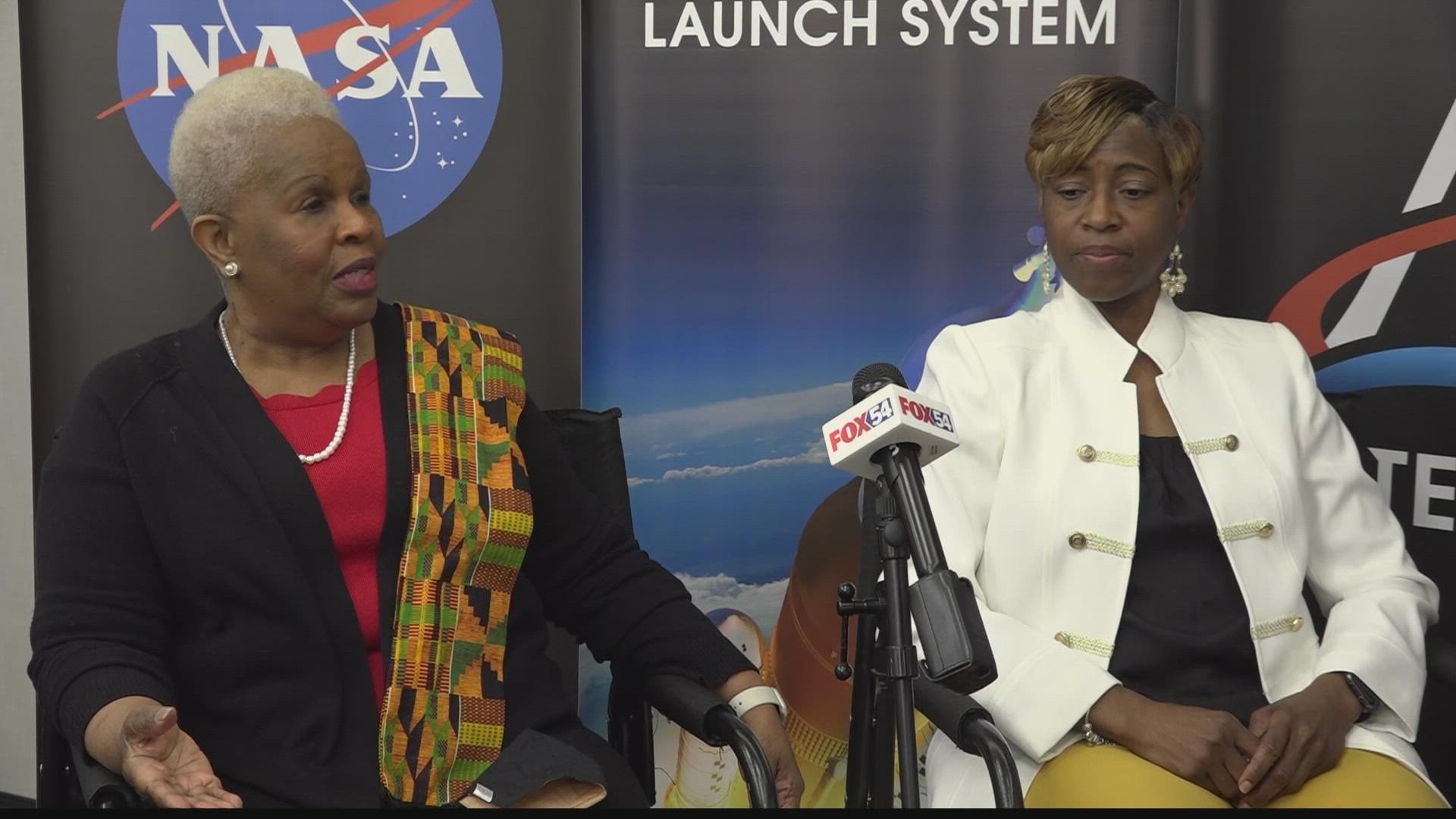HUNTSVILLE, Ala. — You can't tell the story of the rocket city without rockets, and you can't tell a space exploration story without introducing some instrumental people.
Dr. Robert Churney. Annie Easley. Katherine Johnson. Mary Jackson. Dorothy Vaughn. Guion Bluford. Mae Jemison.
Each name identifies a person who helped pave the way to the modern space program. Each person made a mark in history, while knowing their skin color made them stand out.
Elaine Flowers Duncan, Chief of Systems Engineering at Marshall Space Flight Center, has worked in the space industry for 42 years. She says, "The passion that I had helped me get over the tension and nerves that I had about why am I here? It was very intimidating because when I started at Marshall in 1980, there were hardly any females. It was a male dominated, white, male dominated area."
Duncan's experience is shared by Dr. Ruth Jones, Associate Manager of Human Exploration for NASA. She explains, "When I started working at NASA, sometimes I was the youngest person in a room, sometimes I was the only Black in the room, and sometimes I was the only woman in a room. It's loneliness and also intimidation but at the same time, it's empowerment. I feel empowered because if I'm the only black and the only female in the room, there's a reason I'm in the room. It's like I've been invited to the party.
That sense of empowerment Dr. Jones describes developed well before she stepped foot in NASA. She says she developed that while attending the University of Arkansas at Pine Bluff, an HBCU. Jones says, "My college algebra professor saw that I was good at math and said that I should change my major to physics. But he failed to tell me one important fact. There were no physics majors on campus. I was the only physics major on campus."
Attending an HBCU shaped Dr. Jones so much so that she went on to earn a doctorate in physics at Alabama A&M. She looks at HBCUs as a ground to be challenged to build your confidence. She says, "I kind of renamed the acronym for H-B-C-U. To me, it means helping blacks compete universally."
Which is an incredibly accurate assessment when it comes to the space industry. Duncan attended Alabama State and Tawnya Laughinghouse, who works with NASA's Technology Demonstration Missions, attended Spelman College. Laughinghouse says, "My HBCU had high expectations on the students but it was also a very nurturing environment. That's clearly the type of culture I seek to foster in the teams and organizations I lead at NASA."
Duncan says, "My HBCU was an extension of my family. All of my professors, they took a personal interest in me. they challenged me. They drove us hard. All of my professors that had that interest in me, they challenged me so hard, drove me hard, they just inspired me to be the best."
That inspiration isn't lost on Elaine Flowers Duncan, who has made it her mission to help recruit kids in underdeveloped communities to work in the space program. She says, "It doesn't matter how you look, where you grew up. You've got to get [them] all. You've got to get the little boy in the ghetto. You've got to get the little guy who thinks he wants to be a Magic Johnson. Even being that requires skills. You've got to think. The reason I'm here for 42 years is because NASA is enabling me. NASA enables me to reach out to those communities."
RELATED: Astro Restoration Project
Duncan, Jones, and Laughinghouse recognize the special position they hold. and their chance to pay it forward and leave behind a legacy…
Jones says, "To me, legacy means let experience guide and change you. what i mean by that is the experiences I've had. It has guided me through this life of my career at NASA, but has also changed as well."
And to a little girl out there who is interested in space, Laughinghouse says, "It won't be easy. Some days it may look like the hill is too far to climb. But just look at all of those who have come before you. And it's because of them you certainly can."
Duncan adds, "If I can do it, you can do it. No matter where you are, no matter what color you are. I realized that we need it all. there are some brilliant minds that are not being developed."
Jones describes it like this. "When you get a box of crayons, they're all different colors. That's diversity. When you look at each crayon they're the same size; that's equity. When you use all the colors to create a masterpiece, that's inclusion. That's what NASA is all about."

